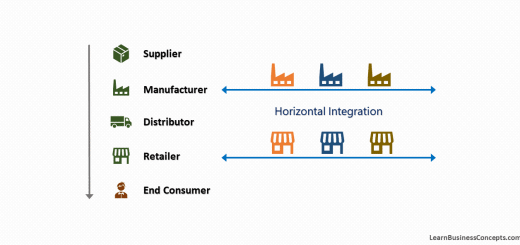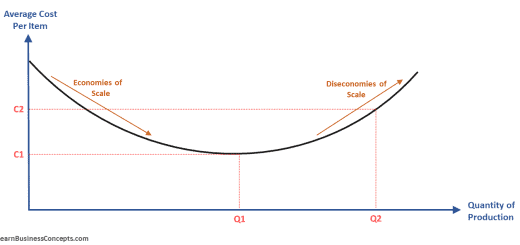Porter’s Five Forces Model: Applied To Airline Industry with Real World Examples
Porter’s Five Forces was developed by Michael Porter, a professor at Harvard Business School. The analysis is used to understand the competitive environment of an industry by examining five key factors: the threat of new entrants, bargaining power of suppliers, bargaining power of buyers, threat of substitute products, and intensity of competitive rivalry.
This analysis is useful for businesses as it provides a framework for understanding the competitive landscape of their industry. By examining each of the five forces, businesses can identify potential risks and opportunities, and develop strategies to succeed in the market.
The airline industry is highly competitive both globally and in the United States. Globally, many established airlines compete for market share, particularly in major air travel hubs such as Europe, Asia, and North America. Also, the airline industry has many challenges with the continuous growth of expenses (fuel prices, maintenance, equipment), ticket sales decrease due to the remote first work culture, scarcity of talented resources, and high landing costs incurred by airports. The competition in the industry is increasing day by day due to the growth of low-cost carriers, which offer affordable air travel options to a wider range of customers.
In the United States, the airline industry is dominated by a small number of major airlines, including American, Delta, Southwest, and United. These airlines control a significant portion of the market share and compete fiercely for customers through pricing strategies, frequent flyer programs, and providing good customer service.
By using Porter’s Five Forces analysis, we can gain a better understanding of the competitive environment in this industry. Following is a detailed description of each force aligned with the Airline Industry.
1. The Threat of New Entrants
This force refers to how easy or difficult for new companies to enter the market. High barriers to entry, such as high capital requirements, regulatory restrictions, and economies of scale, can make it difficult for new companies to enter the market. On the other hand, new companies can easily enter the market if there are low barriers to entry, such as low startup costs, easy access to technology, and low regulatory restrictions.
The airline industry has a high barrier to entry due to the substantial capital investment required for airplanes and airport infrastructure. Also, it is essential to obtain operating licenses from regulatory authorities to open an airline and this is a difficult time consuming activity. The already established airlines have good brand recognition and establish synergies of economies of scale that it is makes a big challenge for the new entrants to join and compete. As you have noticed, the entry of new players in the airline industry is not very common news to notice due to high capital requirements and stringent regulations.
A classic example is the failure of People Express Airlines. The airline was launched in 1981 to offer low-cost air travel to customers in the United States. Initially, the airline was successful, and it quickly expanded its route network to include many major cities in the US and Europe. However, the airline soon began to experience financial difficulties mainly due to the intense competition in the airline industry, particularly from established carriers such as American, Delta, and United. These airlines had significant resources and brand recognition, which made it difficult for People Express to compete on price and service.
2. The Bargaining Power of Suppliers
This force refers to the power that suppliers have over the industry. Suppliers can exert power by controlling the supply of critical inputs, charging high prices, or limiting the quality of their products.
The airline industry relies on suppliers such as aircraft manufacturers, after-sales service providers, fuel providers, ticket sellers, labor costs, and catering services. These suppliers have significant bargaining power due to the relatively small number of suppliers and the high switching costs for airlines. The bargaining power of suppliers is high in the airline industry as follows,
- There are only two big major aircraft manufacturers in the world: Airbus and Boeing. They have significant power over airlines due to the limited alternatives in the market.
- Global demand for skilled human resources results in the airline industry a challenge to attract good talent. The bargaining salary is high due to global inflation, an increase in demand, and the power of unions.
- The global fuel price is fluctuated usually due to Geo-political factors which result in the high bargaining power of suppliers.
3. The Bargaining Power of Buyers
This force refers to the power that buyers have over the industry. Buyers can exert power by demanding low prices, high quality, or other favorable terms. In industries where buyers have many options or where the products are not highly differentiated, buyers have more power.
Airline passengers have limited bargaining power as there are few substitutes for air travel. However, the recent rise of low-cost carriers has increased the bargaining power of buyers. Also with the introduction of online air-ticket buying platforms like FindMyFare, Momondo, and Skyscanner enabled passengers to compare prices and services more easily.
An example of how low-cost airlines have resulted in lower global air ticket prices can be seen in the European airline industry. In the early 1990s, some low-cost airlines, such as Ryanair and EasyJet, began to emerge in Europe. These airlines offered point-to-point air travel at significantly lower prices than traditional carriers, and they quickly gained popularity among budget-conscious travelers.
As low-cost airlines began to grow in popularity, traditional carriers were forced to adapt their pricing strategies to remain competitive. Many airlines began to offer discounted fares and introduced new pricing structures to appeal to price-sensitive customers.
Additionally, low-cost airlines also forced traditional carriers to reduce their operating costs and become more efficient. For example, many airlines began to introduce ancillary fees, such as charges for checked baggage and seat selection, to generate additional revenue and offset the lower fares.
4. The Threat of Substitute Products or Services
This force refers to the threat of substitutes, or alternative products or services that can fulfill the same customer need. If plenty of substitute products are available customers can choose to switch to substitutes if prices become too high. This will then limit the pricing power of companies in the industry.
The airline industry faces a significant threat from substitutes, such as trains, buses, and cars. However, air travel is still the preferred mode of transport for long-distance travel due to its speed and convenience. For example, while trains and buses may be cheaper, they are not as fast and may not offer the same level of comfort as air travel.
On the other hand, A recent survey conducted by OnePoll found that 73% of Americans prefer road trips to fly. Also, a survey of 2,000 people found that between planes, trains, and automobiles, Americans prefer flying the least. (Source: Americans Prefer Road Trips Over Flying—and You Might Agree With The Reason Why” – By oprahdaily.com)
Trends like these will increase the power of substitute products for the airline industry.
5. The Intensity of Competitive Rivalry
This force refers to the intensity of competition among existing companies in the industry. The level of competition depends on factors such as the number of competitors, the level of differentiation, and the degree of price competition. High levels of competition can lead to lower prices, reduced profitability, and higher marketing costs.
The airline industry is highly competitive, with a large number of airlines operating in the market. Airlines compete on price, route network, and service quality, among other factors. The industry is also characterized by high fixed costs, which can lead to price competition and low-profit margins. For example, airlines such as Emirates, Delta, and British Airways compete fiercely to attract customers and maintain their market share.
Key Takeaways
In summary, Porter’s Five Forces analysis highlights the highly competitive environment of the airline industry, with limited opportunities for new entrants and high bargaining power for suppliers. Airlines have to develop their business strategies to improve customer loyalty and manage the cost well to maintain profitability in this challenging industry.
You can refer to the below articles to get more knowledge about Porter’s Five Forces Analysis Model,
- Porter’s Five Forces: Explanation with Industry Examples
- Porter’s Five Forces: Advantages and Disadvantages
What are the strategies which Airline Companies can enable to overcome the above-mentioned challenges?
There are several strategies that airline companies can adopt to overcome the challenges they face in the highly competitive airline industry. Some of these strategies include:
1. Cost Management: Airlines can implement cost management strategies to reduce their operating expenses. This could include optimizing flight schedules to increase aircraft utilization, reducing overhead costs by using technology, and streamlining operational processes.
2. Differentiation: Airline companies can differentiate themselves from their competitors by offering unique services or products. For example, some airlines may offer luxury amenities, such as flatbed seats or in-flight chefs, while others may focus on providing exceptional customer service.
3. Strategic Partnerships: Airline companies can establish partnerships with other airlines or travel providers to expand their route networks and offer more options to customers. For example, an airline could partner with a hotel chain to offer bundled travel packages that include airfare and accommodations.
4. Technology: Airlines can leverage technology to improve their operations and enhance the customer experience. For example, some airlines may use data analytics to optimize pricing and flight schedules, while others may invest in digital platforms to provide customers with more convenient booking options.
5. Sustainability: Airline companies can focus on sustainability initiatives, such as investing in more fuel-efficient aircraft or using sustainable aviation fuel. This can help airlines reduce their carbon footprint and appeal to environmentally conscious consumers.
Overall, successful airline companies will need to be agile and adaptable, and willing to invest in innovation and efficiency to stay competitive in the dynamic airline industry.
Read More About Porter’s Five Forces,
- Porter’s Five Forces: Explanation with Industry Examples
- Porter’s Value Chain: Primary & Support/Secondary Activities
- Porter’s Five Forces: Advantages and Disadvantages
- How to Apply Porter’s Five Forces to Industry / Business: Step-By-Step Simple Detail Guide with Examples
- Porter’s Five Forces: Applied To Fast Food Restaurants Industry with Real World Examples
- Porter’s Five Forces: Applied To Starbucks with Examples
- Porter’s Five Forces: Applied To Banking Industry with Real World Examples
- Porter’s Five Forces: Applied To Clothing / Fashion Industry with Real World Examples


